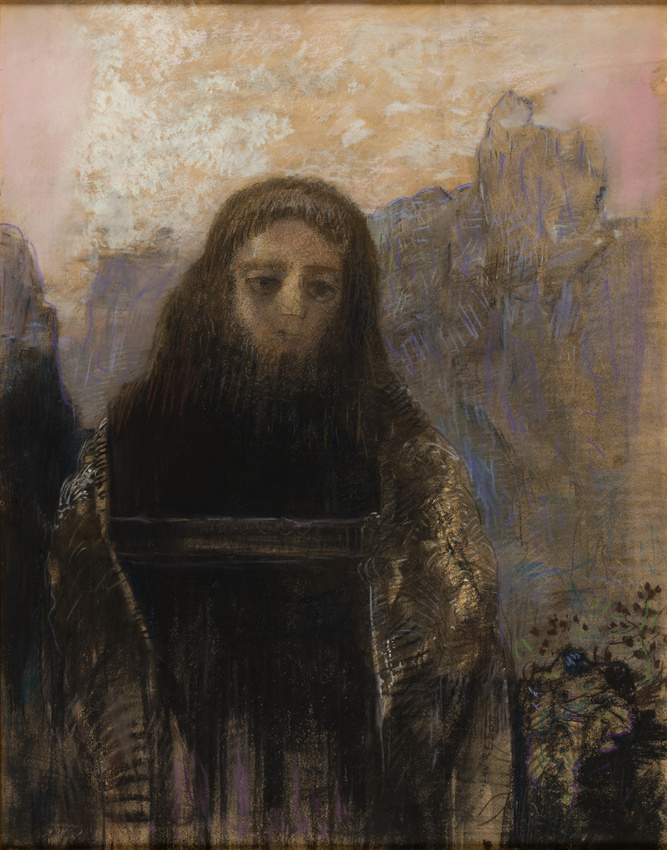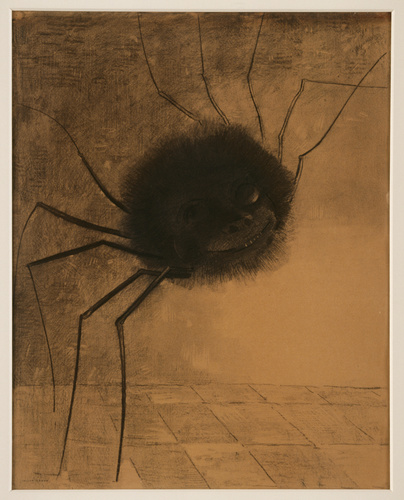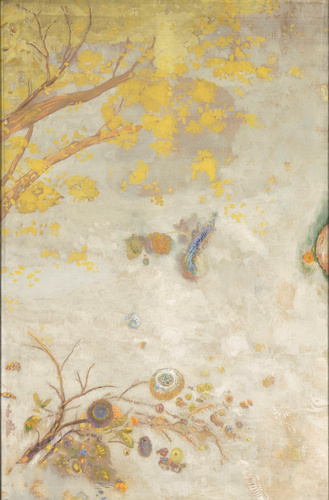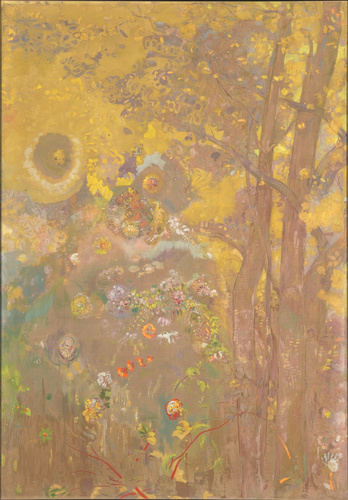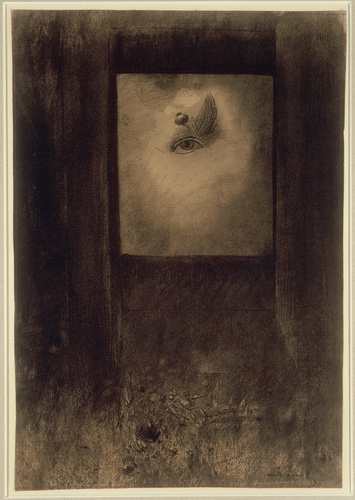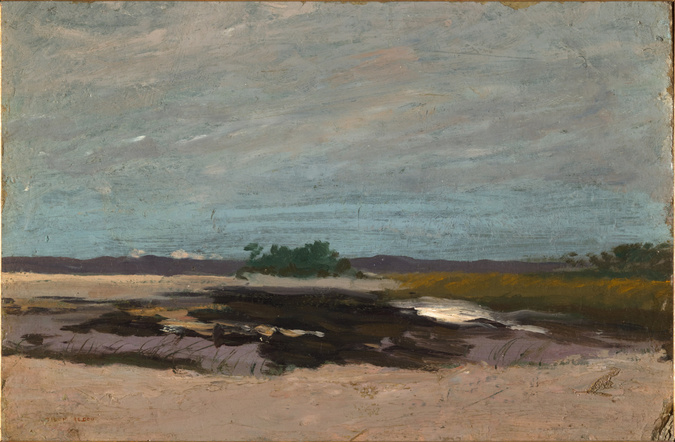Parsifal
Against a background of bare mountains, the monumental and solitary figure of Parsifal stands out. This character is taken from an opera in three acts by Wagner, composed in 1882 and inspired by the legend of the Holy Grail.
Redon had already portrayed Parsifal in a lithograph from 1891-1892. But here, stripped of his helmet and lance, the warrior has been transformed into a magus, haunted by an inner dream. The sombre range of colours, predominantly violet and black, enhances the tragic atmosphere of the work.
We know that Redon, a musician himself, was interested in Wagner's theories for achieving a synthesis of music, poetry, theatre and dance in his operas. The painter had collaborated on the Wagnerian Review with his lithograph Brunnehilde and in 1895 took part in the performances of Tannhaüser in Paris and Lohengrin in London. However, feeling the same wariness as Mallarmé towards Wagnerian theories of ‘Total Art Work', Redon restricted himself to drawing on Wagner's operas for a wide range of subjects.
Through its internal tension and its predominantly sombre colours, this pastel, created in 1912, recalls the melancholic atmosphere already found at times in his work at the time he produced the Noirs. The rocky shapes in the foreground are reminiscent of the early etchings by Redon, influenced by Rodolphe Bresdin (1822-1885). Thus, Parsifal is one example of the artist returning to an earlier inspiration, references to which can be found in his diary: "Oh my soul of former times, distant spirit, you came back to me tonight in the shadows... my nocturnal friend who returns, then leaves, and who I thought had disappeared forever, what brings you back, and at this time? I do not know."
Redon Dossier
